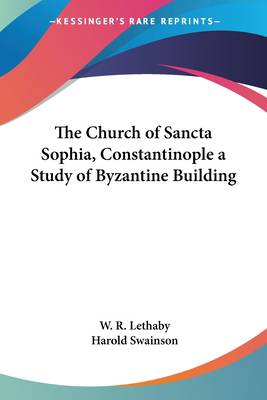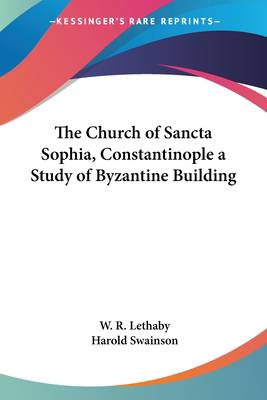
- Afhalen na 1 uur in een winkel met voorraad
- Gratis thuislevering in België vanaf € 30
- Ruim aanbod met 7 miljoen producten
- Afhalen na 1 uur in een winkel met voorraad
- Gratis thuislevering in België vanaf € 30
- Ruim aanbod met 7 miljoen producten
Zoeken
The Church of Sancta Sophia, Constantinople a Study of Byzantine Building
W R Lethaby, Harold Swainson
Paperback | Engels
€ 43,45
+ 86 punten
Omschrijving
The Church of Sancta Sophia, Constantinople is a comprehensive study of the Byzantine building, written by W. R. Lethaby. The book offers a detailed analysis of the architecture, design, and construction of one of the most iconic churches in the world. It explores the historical, cultural, and religious significance of Sancta Sophia, and its role in the development of Byzantine architecture. Lethaby's work is a valuable resource for historians, architects, and anyone interested in the art and culture of the Byzantine Empire. The book is well-researched and beautifully illustrated, providing readers with a fascinating insight into the construction and design of this remarkable building.1894. Sancta Sophia is the most interesting building on the world's surface. Like Karnak in Egypt, or the Athenian Parthenon, it is one of the four great pinnacles of architecture, but unlike them this is no ruin, nor does it belong to a past world of constructive ideas although it precedes by seven hundred years the fourth culmination of the building art in Chartres, Amiens, or Bourges, and thus must ever stand as the Supreme monument of the Christian cycle. The attempt here is some disentanglement of the history of the Church and an analysis of its design and construction; on the one hand, we have been led a step or two into the labyrinth of Constantinopolian topography, on the other, we have thought that the great Church offers the best point of view for the observation of the Byzantine theory of building.This scarce antiquarian book is a facsimile reprint of the old original and may contain some imperfections such as library marks and notations. Because we believe this work is culturally important, we have made it available as part of our commitment for protecting, preserving, and promoting the world's literature in affordable, high quality, modern editions, that are true to their original work.
Specificaties
Betrokkenen
- Auteur(s):
- Uitgeverij:
Inhoud
- Aantal bladzijden:
- 316
- Taal:
- Engels
Eigenschappen
- Productcode (EAN):
- 9781417948390
- Verschijningsdatum:
- 20/09/2004
- Uitvoering:
- Paperback
- Formaat:
- Trade paperback (VS)
- Afmetingen:
- 152 mm x 229 mm
- Gewicht:
- 462 g

Alleen bij Standaard Boekhandel
+ 86 punten op je klantenkaart van Standaard Boekhandel
Beoordelingen
We publiceren alleen reviews die voldoen aan de voorwaarden voor reviews. Bekijk onze voorwaarden voor reviews.











